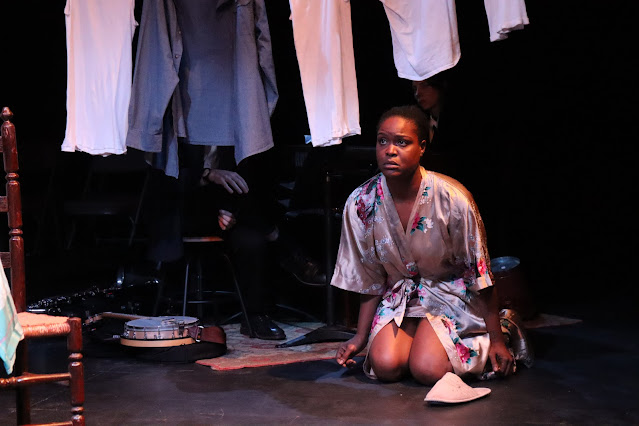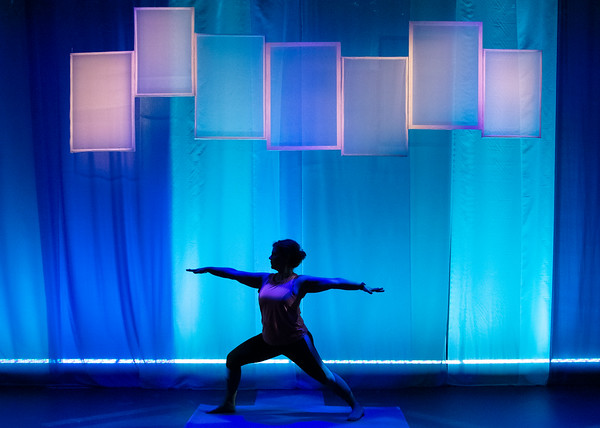Review: "Chasing the Tides, or Exposure" Hits a High-Water Mark
Chasing the Tides, or Exposure
Written and performed by Matilda Woods
Directed by Jessica Burr
Presented by Blessed Unrest at Theaterlab
357 W 36 St., 3rd fl., Manhattan, NYC
December 9-18, 2022
.jpg) |
| "Matilda Woods" in Chasing the Tides, or Exposure. Photo © Maria Baranova Photography |
The writing of Chasing the Tides began with a series of physical prompts, or "body musings," given by director Jessica Burr, and it is the body that focalizes this work. One of the early memories discussed by Woods's character is her adolescent awakening to her body as something perceived by the constituting gaze of others, whether her mother, who looms large throughout, a cute boy at the beach, or any of the other innumerable Others whose perceptual recognition is foundational to one's sense of existing as a subject. She tells us also that she is skilled at tuning into the "algorithms'' of others and thereby establishing intimacy, and the intimate nature of the performance space fruitfully complements this theme of intimacy: if part of the character's exposure is the experience of existing as a body amongst Others, this experience is emphasized for the audience, heightening the feeling of the presence of other bodies, the way they occupy space and the frisson of proximity, primarily to the performer but also to the audience members, seated on three sides of the room and fully lit. At the same time that Woods's character sees the positive in her facility with "algorithms," she later observes that it can come with the cost of conforming to the needs of others in the process of creating intimacy.
.jpg) |
| "Matilda Woods" in Chasing the Tides, or Exposure. Photos © Maria Baranova Photography |
Woods has said, "Some of the material in this piece is rigorously truthful, some of it is rigorously fiction"; and Chasing the Tides does at a well-judged point throw the boundary between memory and fiction into question. Woods gives an entirely captivating, not to mention physically impressive, performance. The physical theater influences in that performance only bring an even greater energy and depth to a wonderfully evocative piece, as does her periodic turning of the gaze on the audience. Whether Woods is wistful, rage-filled, confiding, or dancing out dueling impulses and/or social expectations to L7–much as her character observes that she can be the virgin, the whore, and the monster–she is equally spellbinding. (As an aside, her delivery of a line ending with "all. It all," unintentionally or not, calls to mind lines in Beckett's Footfalls, a story of a daughter and mother with an emphasis on bodies, about the daughter "revolving" her past ["it all"] in her mind.) Chasing the Tides, or Exposure is a perfect fit for anyone chasing a fantastic theater experience.
-John R. Ziegler and Leah Richards



Comments
Post a Comment